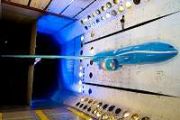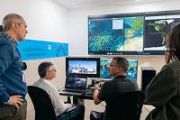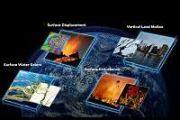
Copernical Team
NASA science, cargo launch on 33rd SpaceX resupply mission to station
This request seems a bit unusual, so we need to confirm that you're human. Please press and hold the button until it turns completely green. Thank you for your cooperation!
Press and hold the button
If you believe this is an error, please contact our support team.
185.132.36.159 : 3c901cba-46c9-4248-a26f-62aa3fe3
Advancing lunar habitats with thermoelectric power generation
This request seems a bit unusual, so we need to confirm that you're human. Please press and hold the button until it turns completely green. Thank you for your cooperation!
Press and hold the button
If you believe this is an error, please contact our support team.
185.132.36.159 : 66946f7c-2be5-4726-a3c3-79d5d226
Juice mission on track for Venus flyby after spacecraft communications restored
 The European Space Agency's Jupiter Icy Moons Explorer (Juice) has resumed normal operations after a communications anomaly temporarily cut contact during its cruise to Venus for a critical gravity-assist maneuver scheduled on 31 August.
The signal loss occurred on 16 July when Juice failed to establish contact with ESA's Cebreros ground station in Spain. Backup attempts from the New Norci
The European Space Agency's Jupiter Icy Moons Explorer (Juice) has resumed normal operations after a communications anomaly temporarily cut contact during its cruise to Venus for a critical gravity-assist maneuver scheduled on 31 August.
The signal loss occurred on 16 July when Juice failed to establish contact with ESA's Cebreros ground station in Spain. Backup attempts from the New Norci Jupiter birth dated through ancient molten rock droplets in meteorites
 Researchers from Nagoya University and the Italian National Institute for Astrophysics (INAF) have determined the timing of Jupiter's formation by studying tiny molten rock spheres known as chondrules preserved in meteorites. These droplets formed 4.6 billion years ago when Jupiter's powerful gravity drove high-speed collisions between rocky and icy planetesimals.
When the planetesimals co
Researchers from Nagoya University and the Italian National Institute for Astrophysics (INAF) have determined the timing of Jupiter's formation by studying tiny molten rock spheres known as chondrules preserved in meteorites. These droplets formed 4.6 billion years ago when Jupiter's powerful gravity drove high-speed collisions between rocky and icy planetesimals.
When the planetesimals co ESA data records help underpin climate change report

According to the newly released 35th State of the Climate report, 2024 saw record highs in greenhouse gas concentrations, global land and ocean temperatures, sea levels, and ocean heat content. Glaciers also suffered their largest annual ice loss on record. Data records from ESA’s Climate Change Initiative helped underpin these findings.
New moon of Uranus
 Image:
New moon of Uranus
Image:
New moon of Uranus Healthy mouse offspring born from space preserved stem cells
 A Kyoto University team has demonstrated that cryopreserved mouse spermatogonial stem cells stored aboard the International Space Station (ISS) for six months can still produce healthy offspring after transplantation. The results provide important insight into reproductive health and germline preservation during long-duration space missions.
Researchers cryopreserved the mouse stem cells b
A Kyoto University team has demonstrated that cryopreserved mouse spermatogonial stem cells stored aboard the International Space Station (ISS) for six months can still produce healthy offspring after transplantation. The results provide important insight into reproductive health and germline preservation during long-duration space missions.
Researchers cryopreserved the mouse stem cells b Juice team resolves anomaly on approach to Venus

The European Space Agency’s Jupiter Icy Moons Explorer (Juice) is on track for its gravity-assist flyby at Venus on 31 August, following the successful resolution of a spacecraft communication anomaly that temporarily severed contact with Earth.
The issue, which emerged during a routine ground station pass on 16 July, temporarily disrupted Juice’s ability to transmit information about its health and status (telemetry).
Thanks to swift and coordinated action by the teams at ESA’s European Space Operations Centre (ESOC) in Darmstadt, Germany, and Juice’s manufacturer, Airbus, communication was restored in time to prepare for the upcoming planetary encounter.
SpaceX delays Starship megarocket launch in latest setback
This request seems a bit unusual, so we need to confirm that you're human. Please press and hold the button until it turns completely green. Thank you for your cooperation!
Press and hold the button
If you believe this is an error, please contact our support team.
185.132.36.159 : 94cf4857-f257-4a0b-b5c5-ecda2125
SpaceX delays tenth Starship launch attempt following ground systems issue
 SpaceX has postponed the planned tenth test flight of its Starship megarocket, citing a problem with ground systems that forced a halt to Sunday's countdown at Starbase in southern Texas.
"Standing down from today's tenth flight of Starship to allow time to troubleshoot an issue with ground systems," the company posted on X. The giant rocket had been scheduled to lift off at 6:30 pm local
SpaceX has postponed the planned tenth test flight of its Starship megarocket, citing a problem with ground systems that forced a halt to Sunday's countdown at Starbase in southern Texas.
"Standing down from today's tenth flight of Starship to allow time to troubleshoot an issue with ground systems," the company posted on X. The giant rocket had been scheduled to lift off at 6:30 pm local 



































